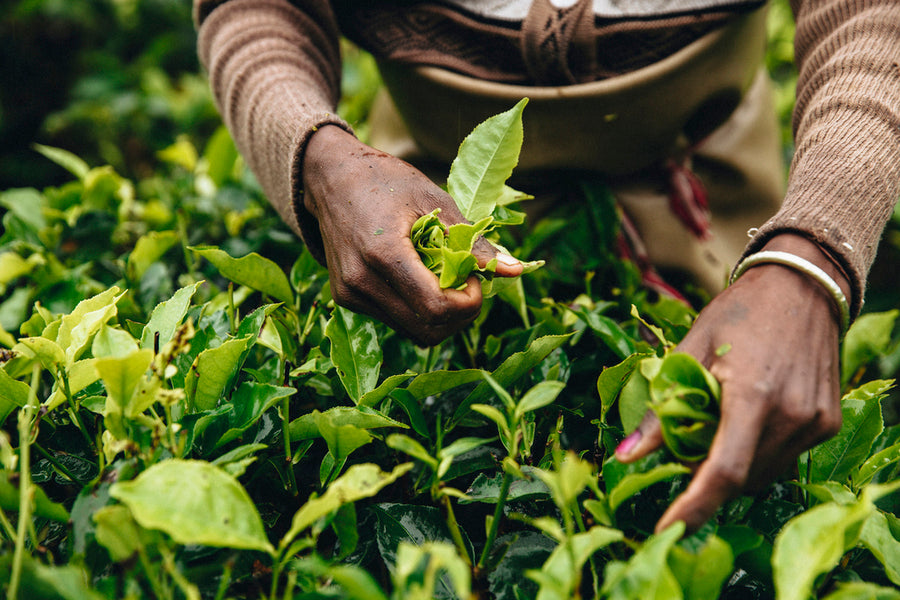The first step of the tea’s journey from our farm to your cup is plucking the tea leaves off the plant during the harvest. We proudly hand-pluck every tea leaf that becomes your tea. This allows us to maintain the highest quality taste and aroma of your favorite beverage. Assam black tea represents the highest standard for black tea in the world. That standard is dependent on the hand-plucked method, and we are committed to upholding it.
The tea plant, camellia sinensis, grows on tea farms around the world to make tea. During the harvest, many leaves sprout from the plant, but just the young leaves and buds are used for (good-tasting) tea. The very best tasting tea includes only the youngest and freshest: the top two leaves and bud. Our workers take pride in only using the “two leaves and a bud method” to make sure our tea is always produced in its purest form.
In contrast, large-scale tea manufacturers often use machines to pluck all of their tea leaves, valuing quantity over quality. Machines cut tea leaves at a much faster rate than humans can pluck them, but this method collects the tea leaves non-selectively. This means that the tea produced by these farms includes more than just the top two leaves and a bud plus stems and damaged leaves. This means a worse final product plus less consistency, but often they are just put together with preservatives or additives anyways. So they are trying to appeal to the masses. It’s no way to properly enjoy tea.
Another positive of using hand-plucked tea is that we continue to maintain a full labor force. When tea farms replace hand-plucking with machine or mechanical ways of plucking their tea, they eliminate jobs. By sacrificing quality for quantity during the harvest and reducing labor costs, these manufacturers aim to produce as much tea as possible for as little money as possible. Our goal is to produce the best tasting tea we can while keeping our farm a vibrant source of jobs.
Historically, tea farms in Assam have been resistant to ditch the hand-plucked method because most of these farms are in hilly areas. Machines that pluck tea leaves need to operate on flat and equal plots of land. However, even in our region, there has been an increase in the use of mechanical plucking. Instead of workers selectively hand-picking the two tea leaves and a bud, their workers will use sickles to shear the leaves off the plant. Again, this non-selective method is used to increase yield. Even with workers operating the sickles, this method includes damaged leaves in the end-product.
Why does using damaged or injured tea leaves matter? It boils down to the biochemistry of the tea plant. Simply put, fully intact and healthy tea leaves contain more of the natural chemicals associated with the enjoyable qualities of tea, and injured tea leaves that are sliced off the plant contain more of the chemicals associated with the negative components of tea. You will taste this difference in every cup of your tea.
